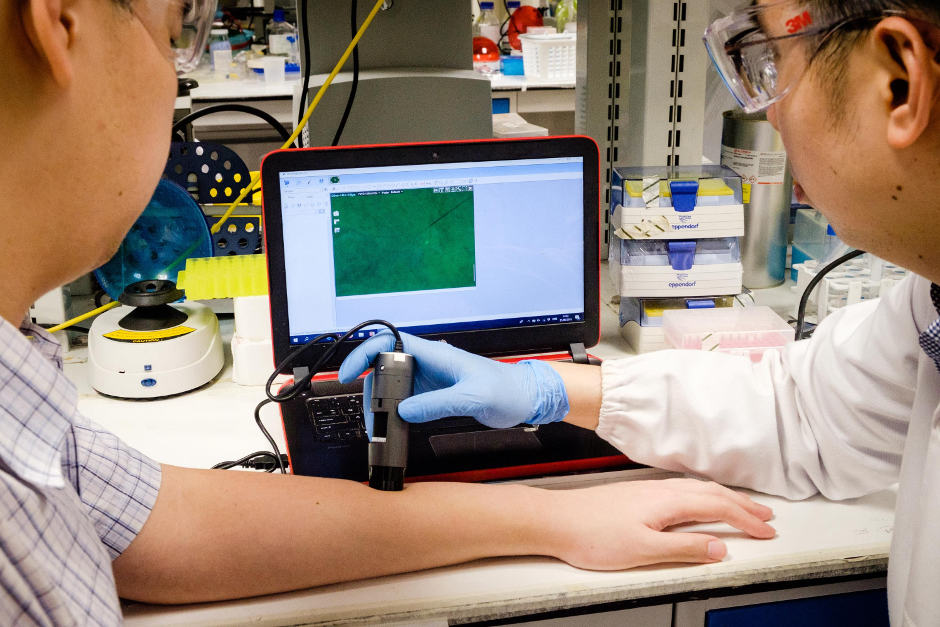Nanoflares shine a light on formation of scar tissue
Scientists in Singapore and the US have developed a method of predicting the formation of scar tissue with nanoparticles coated with strands of DNA.

Clinicians currently find it difficult to predict how scars will develop without resorting to invasive testing.
Using the new nanoparticles, the joint research team from Nanyang Technological University, Singapore (NTU Singapore) and Northwestern University has shown in animals and human skin samples the potential to quickly and accurately predict whether a wound is likely to lead to excessive scarring.
If necessary, doctors can then take conventional preventive measures to reduce scar formation, such as using silicon sheets to keep a wound flat and moist.
The new technique was developed by a team led by Assistant Professor Xu Chenjie from NTU’s School of Chemical and Biomedical Engineering, nanoscience expert Professor Chad A Mirkin from Northwestern University, and Dr Amy S Paller, Chair of Dermatology at Northwestern University Feinberg School of Medicine.
Published in Nature Biomedical Engineering, the new detection method is said to use thousands of nanoparticles called NanoFlares, which have DNA strands attached to their surfaces like a ball of spikes.
Register now to continue reading
Thanks for visiting The Engineer. You’ve now reached your monthly limit of news stories. Register for free to unlock unlimited access to all of our news coverage, as well as premium content including opinion, in-depth features and special reports.
Benefits of registering
-
In-depth insights and coverage of key emerging trends
-
Unrestricted access to special reports throughout the year
-
Daily technology news delivered straight to your inbox










Water Sector Talent Exodus Could Cripple The Sector
Maybe if things are essential for the running of a country and we want to pay a fair price we should be running these utilities on a not for profit...